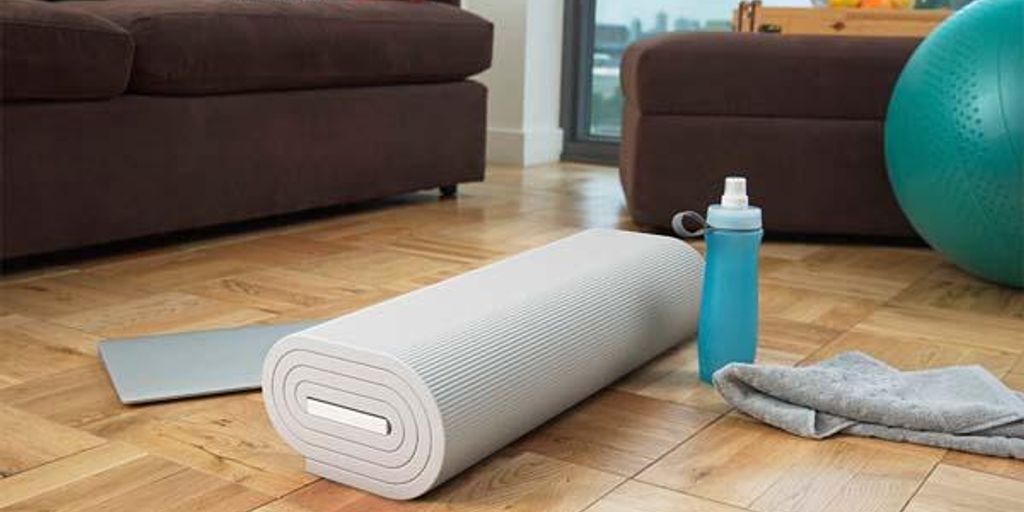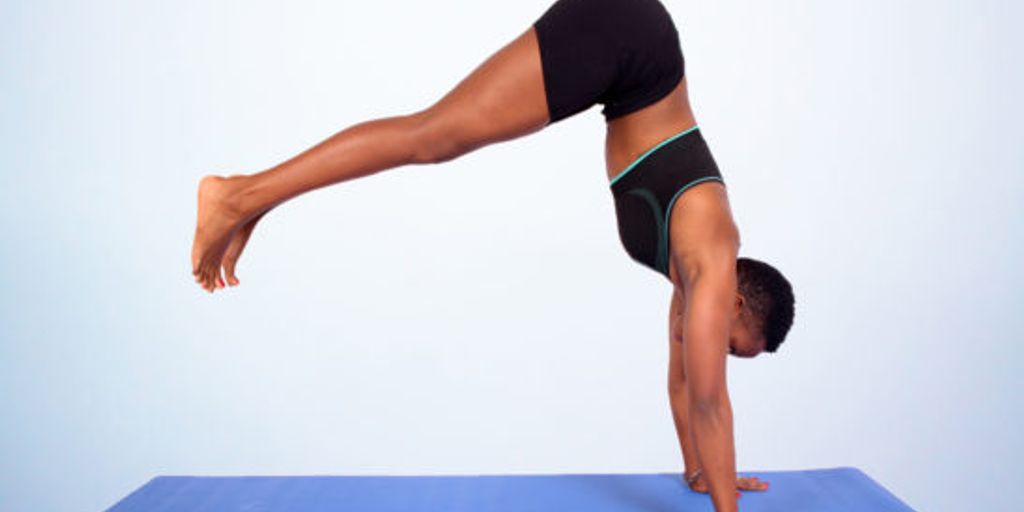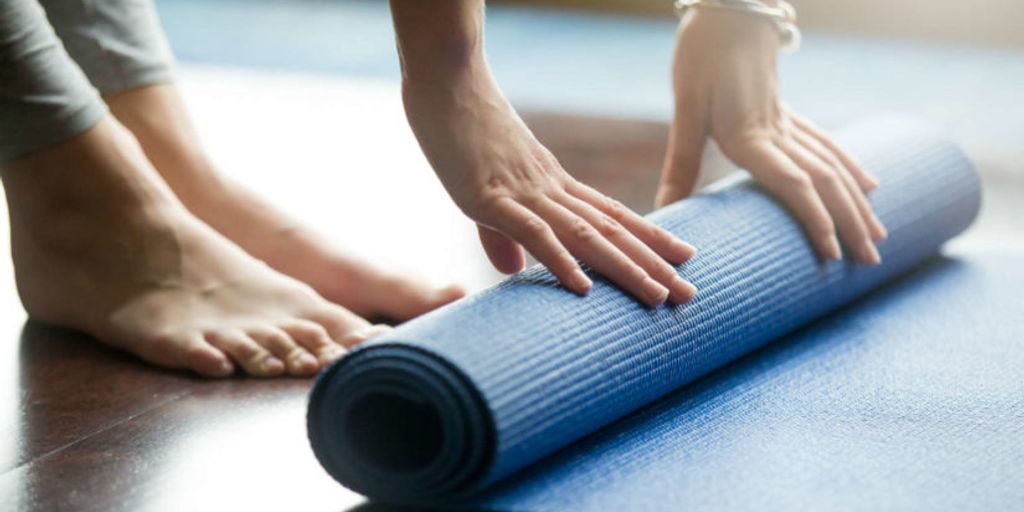
The Ultimate Guide to Choosing the Right Yoga Mat Thickness
Choosing the right yoga mat thickness can significantly impact your practice, comfort, and overall experience. With a plethora of options available in the market, it's essential to understand the various factors that can influence your decision. This guide aims to provide comprehensive insights into different yoga mat thicknesses, their pros and cons, and how to select the perfect mat tailored to your needs.
Key Takeaways
- Understanding the different thickness options available can help you make an informed decision that suits your yoga practice and personal comfort levels.
- The type of yoga you practice, your body type, and your need for portability are crucial factors to consider when choosing a yoga mat thickness.
- Material and durability are important aspects to look into, as they affect the longevity and eco-friendliness of the mat.
- Yoga mat thickness can have a significant impact on joint health, providing necessary support for knees, wrists, and spinal alignment.
- Budget considerations are essential; balancing cost with quality can help you find a mat that offers good value for money.
Understanding Different Yoga Mat Thicknesses
Standard Thickness Options
Yoga mats come in a variety of thicknesses, typically ranging from thin (about 1/16 inch) to thick (up to 1/4 inch). Each thickness level serves different styles and preferences. Standard yoga mat thickness levels are designed to cater to various needs, from portability to comfort.
Pros and Cons of Various Thicknesses
-
Thin Mats (1/16 inch):
- Pros: Lightweight, easy to carry, provides a stable surface.
- Cons: Less cushioning, may be uncomfortable for some poses.
-
Standard Mats (1/8 inch):
- Pros: Balanced cushioning and stability, suitable for most practices.
- Cons: May not provide enough support for sensitive joints.
-
Thick Mats (1/4 inch):
- Pros: Excellent cushioning, ideal for restorative yoga and those with joint issues.
- Cons: Heavier, less portable, can reduce stability in standing poses.
How Thickness Affects Your Practice
The thickness of your yoga mat can significantly impact your practice. Thinner mats offer more stability, which is crucial for balance poses, while thicker mats provide more cushioning, which can be beneficial for seated and supine poses. Finding the right balance between cushioning and stability is essential for an effective yoga practice.
Choosing the right yoga mat thickness is a personal decision that depends on your specific needs and the type of yoga you practice.
Factors to Consider When Choosing Yoga Mat Thickness
Type of Yoga Practice
The type of yoga practice you engage in significantly influences the ideal mat thickness. For instance, restorative yoga often benefits from thicker mats for added comfort, while Vinyasa or Ashtanga practitioners might prefer thinner mats for better stability and balance.
Body Type and Personal Comfort
Your body type and personal comfort are crucial when selecting a yoga mat. Heavier individuals may find thicker mats more supportive, whereas lighter individuals might prefer thinner mats for better ground connection. Personal comfort should always be a priority.
Portability and Storage
Consider how often you'll need to transport your mat. Thicker mats, while more comfortable, can be bulkier and harder to carry. If you travel frequently or attend classes outside your home, a thinner, more portable mat might be more convenient.
Remember, the best yoga mat thickness for you balances comfort, support, and practicality based on your unique needs and lifestyle.
Material and Durability of Yoga Mats
Common Materials Used
Yoga mats are made from a variety of materials, each offering unique benefits. The most common materials include PVC, TPE, natural rubber, and cork. PVC mats are durable and provide excellent grip, but they are not eco-friendly. TPE mats are more environmentally friendly and offer good cushioning. Natural rubber mats are sustainable and provide great traction, while cork mats are antimicrobial and offer a natural feel.
Durability Based on Thickness
The thickness of a yoga mat can significantly impact its durability. Thicker mats tend to last longer as they provide more cushioning and are less likely to wear out quickly. However, they can be heavier and less portable. Thinner mats, while more convenient for travel, may wear out faster, especially with frequent use.
Eco-Friendly Options
For those looking to make an environmentally conscious choice, there are several eco-friendly yoga mat options available. Mats made from natural rubber, cork, and jute are biodegradable and free from harmful chemicals. These mats not only support your practice but also contribute to a healthier planet.
When choosing a yoga mat, consider both the material and thickness to ensure it meets your needs for durability and environmental impact.
Impact of Yoga Mat Thickness on Joint Health
Support for Knees and Wrists
When it comes to choosing the right thickness, the support provided to your knees and wrists is crucial. Thicker mats offer more cushioning, which can be beneficial for those with sensitive joints or previous injuries. However, too much thickness can sometimes lead to instability during certain poses.
Spinal Alignment
Proper spinal alignment is essential for a safe and effective yoga practice. A mat that is too thin may not provide adequate support, leading to discomfort or strain. Conversely, a mat that is too thick can make it challenging to maintain balance, affecting your alignment.
Cushioning vs. Stability
Finding the right balance between cushioning and stability is key. While thicker mats offer more comfort, they can sometimes compromise stability, especially in standing poses. On the other hand, thinner mats provide better stability but may lack the necessary cushioning for floor exercises.
When selecting a yoga mat, consider body weight, yoga style, and environment to find the ideal thickness for your needs.
Yoga Mat Thickness for Different Skill Levels
Beginners
For beginners, a thicker yoga mat, typically around 6mm to 8mm, is recommended. This extra cushioning provides additional support and comfort, which is crucial when you're still getting used to the poses and may need more padding for your joints.
Intermediate Practitioners
Intermediate practitioners often prefer a medium-thickness mat, around 4mm to 6mm. This thickness offers a balance between cushioning and stability, allowing for more dynamic movements while still providing adequate support.
Advanced Yogis
Advanced yogis usually opt for thinner mats, around 1mm to 3mm. These mats offer the least amount of cushioning but the highest level of stability, which is essential for advanced poses and balance.
Choosing the right mat thickness can significantly impact your practice, enhancing both comfort and performance as you progress through different skill levels.
Comparing Popular Yoga Mat Brands by Thickness
When comparing popular yoga mat brands by thickness, it's important to consider the specific features and benefits each brand offers. Brand A focuses on durability and eco-friendly materials, while Brand B emphasizes cushioning for joint support. Brand C stands out for its innovative design and portability. Each brand caters to different preferences and needs, so it's essential to choose the one that aligns with your yoga practice and personal comfort.
Budget Considerations for Yoga Mat Thickness
Cost vs. Quality
When it comes to yoga mats, cost often correlates with quality. Higher-priced mats usually offer better durability, grip, and comfort. However, there are affordable options that provide decent quality for beginners or occasional practitioners.
Long-Term Investment
Investing in a high-quality yoga mat can save you money in the long run. A durable mat will last longer, reducing the need for frequent replacements. Consider the longevity of the mat when making your decision.
Affordable Options
For those on a tight budget, there are several affordable yoga mats available that still offer good performance. Look for mats that provide a balance between cost and essential features like grip and cushioning.
Choosing the right yoga mat thickness doesn't have to break the bank. With careful consideration, you can find a mat that fits both your practice and your budget.
When choosing the right yoga mat thickness, it's essential to consider your budget. Thicker mats often provide more cushioning but can be more expensive. For a balance of comfort and affordability, explore our range of yoga mats that cater to all budgets. Visit our website to find the perfect mat for your practice and take advantage of our special offers.
Conclusion
Choosing the right yoga mat thickness is essential for enhancing your practice and ensuring comfort and safety. By considering factors such as your personal comfort preferences, the type of yoga you practice, and your physical needs, you can find a mat that best suits you. Remember, there is no one-size-fits-all solution, so take the time to explore different options and find the perfect balance that supports your journey towards better health and well-being.
Frequently Asked Questions
What is the standard thickness for a yoga mat?
The standard thickness for a yoga mat is typically around 1/8 inch (3mm). This provides a balance between cushioning and stability.
Is a thicker yoga mat better for joint support?
Yes, a thicker yoga mat can offer better joint support, especially for the knees and wrists. However, it may also affect stability during certain poses.
How does the thickness of a yoga mat affect portability?
Thicker yoga mats are generally heavier and bulkier, making them less portable. If you travel frequently with your mat, a thinner option may be more convenient.
Are thicker yoga mats more durable?
Not necessarily. Durability depends more on the material and quality of the mat rather than its thickness. Some thin mats are made from highly durable materials.
What thickness is recommended for beginners?
Beginners often benefit from a mat that is around 1/4 inch (6mm) thick, as it provides extra cushioning and comfort while they are still getting used to the poses.
Can I use a thick yoga mat for all types of yoga practices?
While you can use a thick yoga mat for most practices, it may not be ideal for styles that require a lot of balance and stability, such as Ashtanga or Vinyasa yoga.


